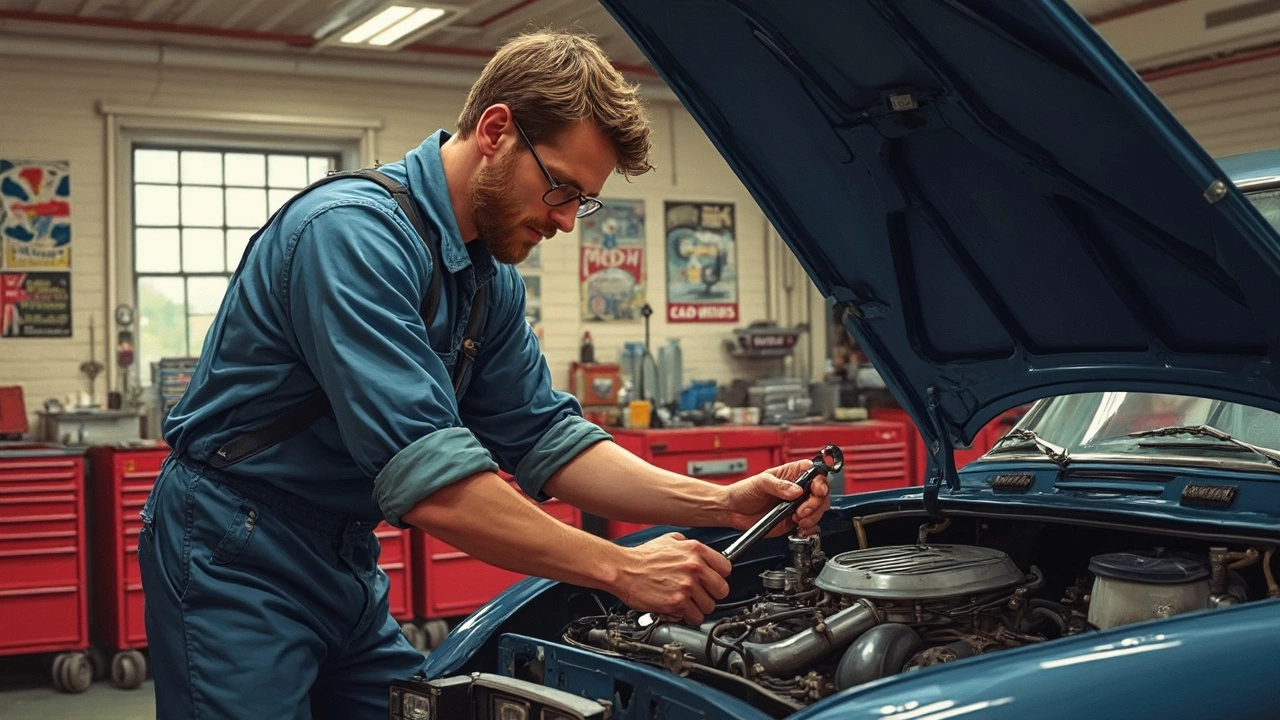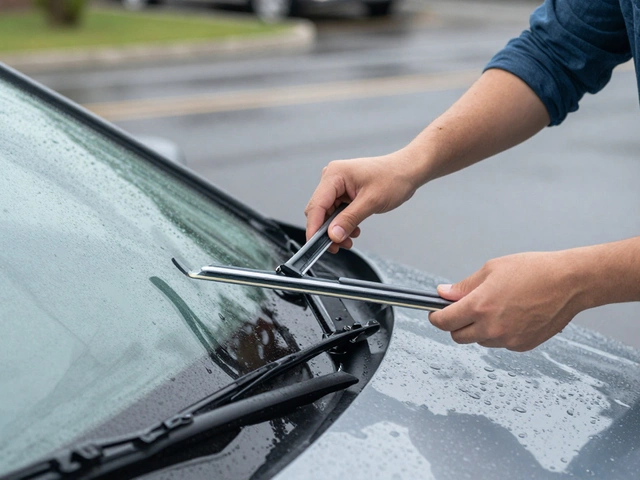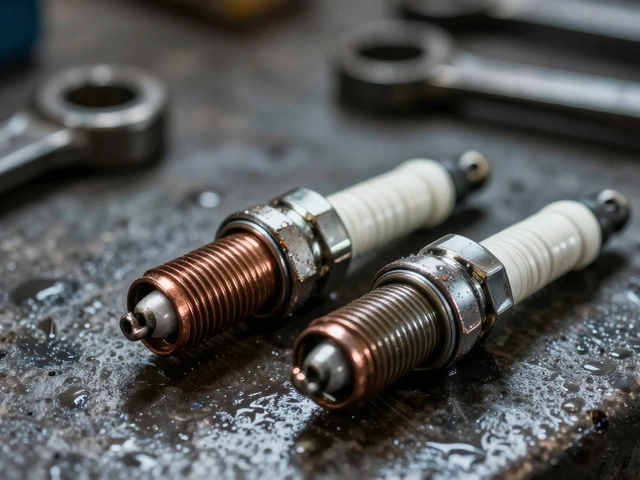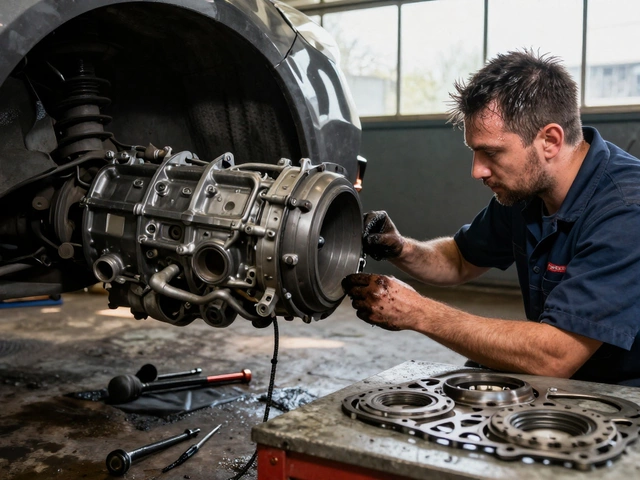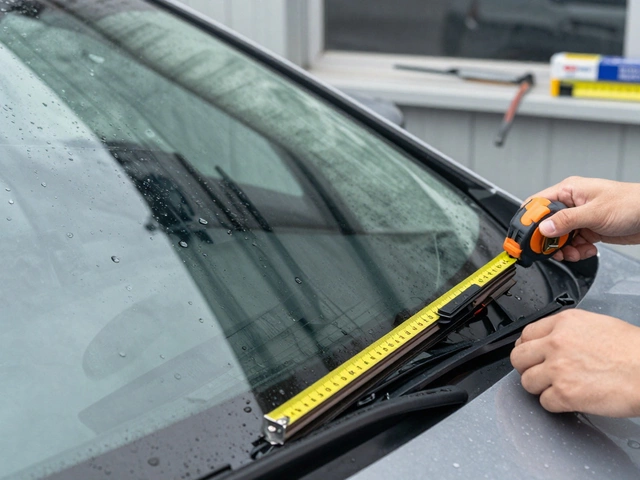Picturing the heart of your car, you probably imagine the engine roaring to life. But behind that is the fuel pump, quietly doing its job to keep the engine fed with the right amount of fuel. When it's not working, neither is your ride. But is this something you can fix by tinkering around, or do you need to call in the cavalry?
First off, let's get straight: the fuel pump isn't a one-size-fits-all component. It varies with the make and model of your car—whether your vehicle is sipping gas like a vintage compact or guzzling it like a brawny truck. Knowing what kind of pump you have is half the battle in figuring out whether it's an easy fix.
Now, here's how you can tell if your fuel pump's the problem. Ever experienced that spluttering start when you turn the key, or maybe your engine just suddenly dies while you're cruising? Those are classic signs. Sometimes, it's less dramatic, like a drop in fuel efficiency or strange noises coming from the tank area.
- Understanding the Fuel Pump's Role
- Common Signs of a Faulty Fuel Pump
- Tools You'll Need for a DIY Fix
- Step-by-Step Guide to Replacing a Fuel Pump
- When to Call in the Pros
- Maintenance Tips to Extend Fuel Pump Life
Understanding the Fuel Pump's Role
The fuel pump is like the unsung hero of your car's engine system. It works away behind the scenes, making sure that the right amount of fuel reaches the engine whenever you hit the gas pedal. Without it, your car wouldn’t be able to fire up its cylinders or accelerate down the highway.
Your typical fuel pump sits in the fuel tank and pushes fuel through a line to the engine. This might sound simple, but the process involves balance and precision. It needs to maintain the correct pressure so your engine runs smoothly. If it delivers too little fuel, the engine won't have enough power. Too much, and you could flood the engine.
Types of Fuel Pumps
There are mainly two types of fuel pumps: mechanical and electric. Older vehicles likely have a mechanical pump driven by the engine's camshaft. These are more straightforward and mechanical—work more like a seesaw action. Electric pumps are common in modern vehicles, submerged in the fuel tank, and controlled by electronic systems for precision.
Why It Matters
So, why all the fuss about this little component? Well, without a functioning fuel pump, your car's engine won't receive the fuel it needs. Imagine it like cutting off the water supply to a firehose. It’s crucial not only for performance but also for fuel efficiency and longevity of the engine. A struggling pump could make your engine work harder, leading to wear and tear or even more costly repairs down the road.
If you're considering tackling a fuel pump issue yourself, solid knowledge of its role and types will give you a good foundation to work from. And with today's ever-advancing car tech, knowing whether you have a mechanical or electric setup can help decide if a job is a DIY or one for the shop.
| Type | Usage | Common Vehicles |
|---|---|---|
| Mechanical | Used in older models | Classic cars, older trucks |
| Electric | Standard in modern vehicles | Modern sedans, SUVs |
Common Signs of a Faulty Fuel Pump
Spotting the signs of a faulty fuel pump early can save you from being stranded or facing bigger repair bills. Here are some common symptoms you should watch out for.
Sputtering Engine at High Speeds
If your engine starts to sputter at high speeds, it might be a sign your fuel pump isn't delivering a steady stream of fuel. You could be cruising down the highway, going 60 mph, and suddenly feel the car jerk or lose power before regaining speed. It's like your car is throwing a little tantrum.
Difficulty Starting the Car
It's one thing if your car doesn't start after a cold night. But if you're finding it difficult to start even under mild conditions, it might be that your fuel pump can't supply enough fuel to get things going. Listen for a whining noise from your tank when you turn the key—that's another clue something's not right.
Loss of Power Under Stress
Experiencing a sudden loss of power when going uphill or carrying a heavy load? That's a classic sign. Your vehicle needs that extra fuel oomph to tackle such demands, but a bad pump won't keep up, leaving you crawling up inclines at snail speed.
Reduced Fuel Efficiency
If you're making more trips to the gas station without extra travel, it could mean your fuel pump is leaking fuel or not managing its flow efficiently. A drop in your car's fuel economy often sneaks up gradually, but paying attention to your mileage can give you a heads-up.
Engine Overheating
Your engine overheating isn't always a cooling system failure; sometimes, it's the fuel pump working too hard to deliver fuel, causing it to overheat. If your temp gauge is creeping up without a clear reason, consider checking the pump.
Check Engine Light
Lastly, don't forget the trusty check engine light. While it doesn’t scream "fuel pump," a diagnostic read will point to codes like P0230 to P0233, indicating the fuel pump's irregularities.
These signs can overlap with other issues, so getting a professional opinion is never a bad call if you're uncertain.
Tools You'll Need for a DIY Fix
Tackling a fuel pump fix yourself can feel like you're stepping up to the big leagues of car repair. But don't worry, having the right tools and knowing how to use them can make the job a whole lot easier. Here's what you'll need to have on hand.
Basic Tools
- Socket Wrench Set: Essential for removing various bolts and nuts. Make sure you have the right sizes for your specific car model.
- Screwdrivers: Both Phillips and flat-head are handy, as many components use different types of screws.
- Rubber Mallet: Useful for gentle taps without risking damage to sensitive parts.
Specific Tools for Fuel Pumps
- Fuel Line Disconnect Tool: This is crucial for safely disconnecting fuel lines without causing leaks or damage.
- Multimeter: To test electrical connections and ensure they're working as they should be.
- Safety Gear: Think gloves to protect your hands, and eye protection because safety always comes first.
"Having the right tool is half the battle," says Mike Allen, a veteran automotive mechanic with over 20 years of experience under his belt. "Relying on inappropriate tools can make a simple job twice as hard and potentially damage components."
Optional but Handy
- Car Jack and Jack Stands: If your fuel pump is located underneath, you'll need to safely lift your vehicle to access it.
- Drip Pan: To catch any fuel that might spill and keep your workspace clean.
Equipping yourself with these tools will prepare you for a smooth DIY fuel pump replacement. Remember, taking your time and not rushing the process is key to getting it done right.

Step-by-Step Guide to Replacing a Fuel Pump
Every do-it-yourselfer needs a game plan before diving under the hood. So, let's break it down into steps to get that fuel pump out and a new one in.
Tools and Prep Work
Make sure you're not diving in blind. You'll need a set of wrenches, a jack with stands, a screwdriver, plus safety gear like goggles and gloves. And don't forget the ever-important automotive manual for your ride!
- Jack and stands
- Wrenches and screwdrivers
- Safety goggles and gloves
- Your car's manual
Step 1: Relieve Fuel System Pressure
Before anything else, relieve the fuel system pressure to avoid a mess. You can usually do this by removing the fuel pump fuse while the engine is running. It'll stall, that's expected.
Step 2: Disconnect the Battery
No sparks allowed. Disconnect the battery to keep things safe while you work.
Step 3: Access the Fuel Pump
In most cars, the fuel pump is inside the tank. Depending on how your car’s built, you might get to it through the backseat or under the car. Remove any covering panels first.
Step 4: Remove the Old Fuel Pump
Disconnect the fuel lines and any electrical connectors carefully. Once it's all free, take out the old pump.
Step 5: Install the New Fuel Pump
This is a reverse of what you just did. Connect everything back in place, ensuring a snug and correct fit.
Step 6: Reconnect the Battery and Test
Time to see if all that elbow grease paid off. Reconnect the battery and turn the ignition. If everything is patched up well, your car should start without a hitch!
Double-Check Your Work
A good mechanic always checks their work. Look for leaks and make sure everything's secure. Better safe than sorry!
Remember, replacing a fuel pump is a bit of a challenge—you're working with fuel and electricity, after all. If you hit a snag or just aren't comfortable, don't hesitate to call the pros. It's often worth it for peace of mind, and a job well done!
When to Call in the Pros
Alright, so you've got your hands a bit dirty, and you're wondering if you should proceed or pick up the phone for some professional help. Sometimes, calling in an expert really is the best thing for your car and your peace of mind.
Complex Diagnoses
If you're not sure that the fuel pump is the real culprit causing your car issues, it might be time for a pro's touch. Modern cars have intricate systems, and a faulty pump can mimic other problems like a bad injector or fuel line issues. Professionals can run diagnostics to pinpoint exactly what's going on.
Lack of Tools or Experience
Replacing a fuel pump can involve more than just elbow grease. It often requires specific tools or equipment that the average DIY enthusiast might not have on hand. And let's face it, not everyone is comfortable diving under the hood. If you're feeling out of your depth, that's a clear sign to bring in someone who does this for a living.
Safety Concerns
Handling fuel is inherently risky. Sparks, improper handling, and leaks can lead to hazardous situations. If you've got even a slight suspicion that something could go boom, don't risk it. Call a specialist to avoid any potential disasters. Remember, safety first!
Warranty and Legal Considerations
Have you checked the fine print on your car's warranty? Sometimes any change or repair outside of a certified shop can void it. If your car's still under warranty, it might be smarter to see a professional, ensuring you're covered down the road for any other issues.
So, while tinkering with your ride is rewarding, there are certainly times when calling in a pro to handle your auto maintenance just makes sense. It can save you loads of hassle and potentially some serious cash in the long run.
Maintenance Tips to Extend Fuel Pump Life
Your car's fuel pump isn't immortal, but with the right care, you can stretch its lifespan quite a bit. Think of your fuel pump as you would a beloved pet—it needs the right environment and regular check-ups. Here’s what you can do to keep it purring contentedly for longer.
Keep Your Gas Tank Above a Quarter Full
Your fuel pump is designed to be cooled and lubricated by the fuel itself, so driving on fumes isn't just risky for getting stranded. It can also overheat and damage the pump. Aim to refuel when you're down to about a quarter tank.
Regularly Replace Fuel Filters
Fuel filters are like the lungs of the fuel system. When they clog, the pump has to work harder, which isn’t doing it any favors. Replacing them every 2 years or every 24,000 miles is a good rule of thumb. It’s a simple swap that can save you a ton of hassle later.
Avoid Contaminated Fuel
Not all gas stations are created equal. Stick to reputable ones to avoid fuel with debris or water. Poor quality fuel means extra work for the pump, and that's a surefire way to reduce its lifespan.
Mind Those Warning Signs
Think of a noisy pump as a car's way of saying things aren't right. If you hear it whining or humming louder than usual, get it checked out. Early intervention can prevent minor issues from blowing up into major ones.
Statistics in Fuel Pump Longevity
If you're wondering how effective these tips can be, consider this snippet from a recent survey of auto repair shops:
| Maintenance Action | Potential Increase in Lifespan |
|---|---|
| Keeping Tank Above 1/4 | 15% |
| Regular Filter Replacement | 25% |
| Using High-Quality Fuel | 20% |
These steps don't require much time but will definitely spare you from unnecessary headaches down the road. Stay ahead with your car maintenance, and your car repair bill will thank you for it!
